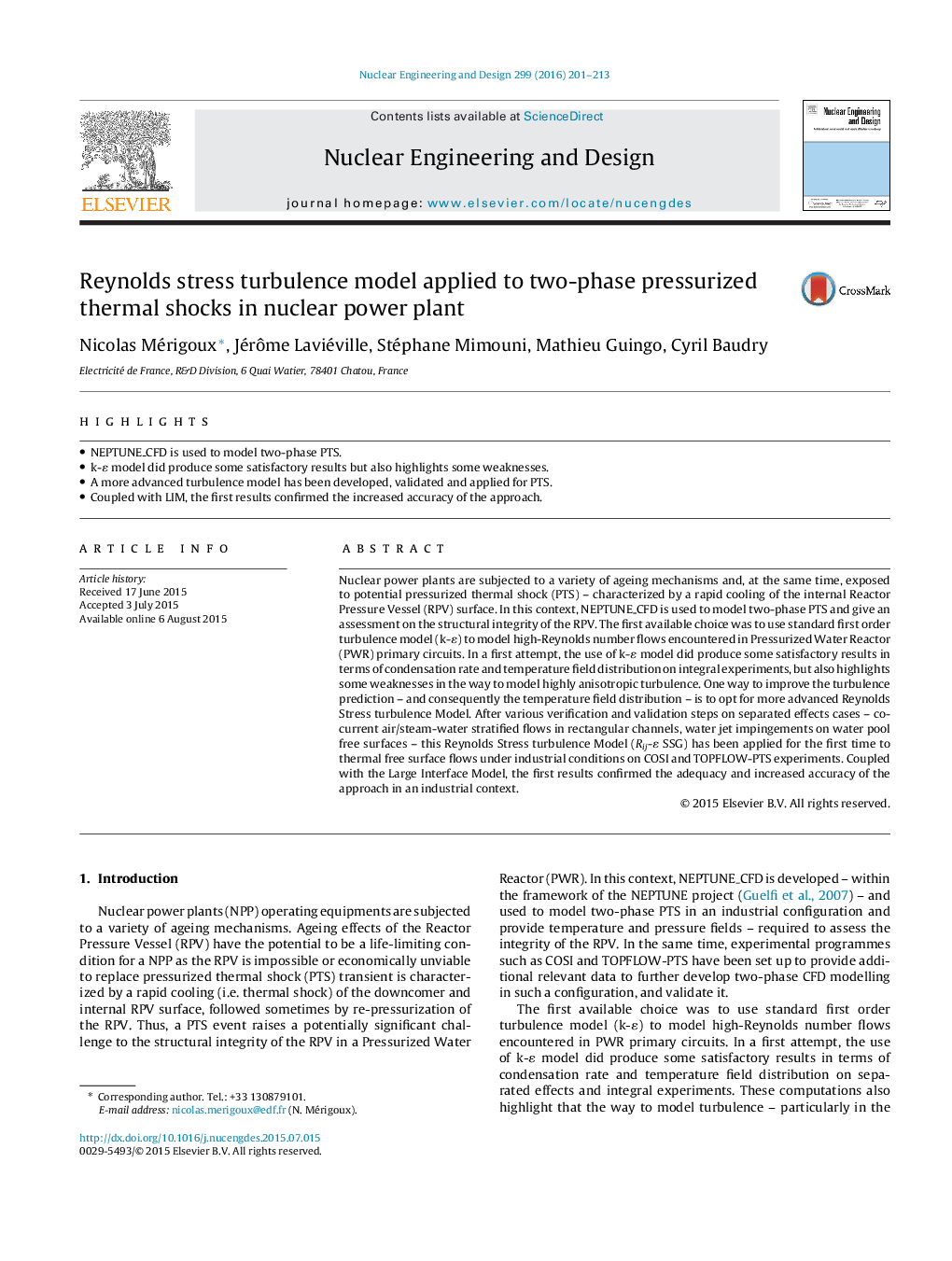| کد مقاله | کد نشریه | سال انتشار | مقاله انگلیسی | نسخه تمام متن |
|---|---|---|---|---|
| 296023 | 511702 | 2016 | 13 صفحه PDF | دانلود رایگان |
• NEPTUNE_CFD is used to model two-phase PTS.
• k-ɛ model did produce some satisfactory results but also highlights some weaknesses.
• A more advanced turbulence model has been developed, validated and applied for PTS.
• Coupled with LIM, the first results confirmed the increased accuracy of the approach.
Nuclear power plants are subjected to a variety of ageing mechanisms and, at the same time, exposed to potential pressurized thermal shock (PTS) – characterized by a rapid cooling of the internal Reactor Pressure Vessel (RPV) surface. In this context, NEPTUNE_CFD is used to model two-phase PTS and give an assessment on the structural integrity of the RPV. The first available choice was to use standard first order turbulence model (k-ɛ) to model high-Reynolds number flows encountered in Pressurized Water Reactor (PWR) primary circuits. In a first attempt, the use of k-ɛ model did produce some satisfactory results in terms of condensation rate and temperature field distribution on integral experiments, but also highlights some weaknesses in the way to model highly anisotropic turbulence. One way to improve the turbulence prediction – and consequently the temperature field distribution – is to opt for more advanced Reynolds Stress turbulence Model. After various verification and validation steps on separated effects cases – co-current air/steam-water stratified flows in rectangular channels, water jet impingements on water pool free surfaces – this Reynolds Stress turbulence Model (Rij-ɛ SSG) has been applied for the first time to thermal free surface flows under industrial conditions on COSI and TOPFLOW-PTS experiments. Coupled with the Large Interface Model, the first results confirmed the adequacy and increased accuracy of the approach in an industrial context.
Journal: Nuclear Engineering and Design - Volume 299, 1 April 2016, Pages 201–213
